F-35A Lightning II: Revisiting Glory, Challenging the Competitiors
This article dives into the general capabilities of the F-35 Lightning II, the world’s most widely produced fifth-generation aircraft, and how it stacks up against its rivals, including the F-22, the world’s first fifth-generation fighter to enter service.
Vaishnav Bramhankar
3/29/20247 min read

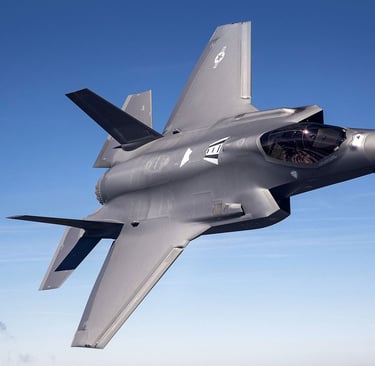
F-35 Lightning is believed to be the most elite example in the fleet of modern warplanes flying today. We have known about many stealth fighter jets like the F22 Raptor, Chengdu J-20, Sukhoi Su-57 and such stealth fighter jets from other countries, here's how F-35 lightning stands apart from rest of this stealth fighter jets which are in service today, specifically Russian Su-57 adn Chinese J-20:
HOW DOES IT WORK?
The F35 Lightning is a single-seater fighter similar to the F22 Raptor, the fighter is highly maneuverable and has a highly intense stealth technology to enter into the enemy zone remaining undetected with its powerful stealth and radar technology. The jet contains a radar pod at its tip which detects multiple air targets making it a difficult jet to encounter when faced off head-to-head, as the F-35 has 6 IR cameras around the jet directly sending the video feed to the fighter pilot helmet visor and also giving the fighter pilot the visions all around the jet as well as below the jet with a highly improved field of view for the fighter pilot with inbuilt night vision and missile warning system which makes it difficult for other jets to target F-35 as it almost gives every vision if the battlefield to the fighter pilot on hits helmet’s visor, the EOTS ( Electronic- Optical Targeting System) under the chin of the jet acts a sniper for the jet directly targeting ground targets from high altitude and as well as air to air target with its high efficiency as its system sends direct coordinates of the target to the bombs loaded on the jet making this stealth fighter a supercomputer flying in the air and as well as staying undetected by the enemy radars by its stealthy technology with also painted electromagnetic paints which makes the radar beams to pass through it.
Electronic-Optical Targeting System: Eyes in the Sky
The EOTS works on FLIR (Forward-looking infrared radiation) as it captures the heat imaging with the cameras installed on the jet, as the F-35 has these cameras installed all around the jet and helps to transmit images to the pilot's helmet visor and this system works in the night as well as foggy zones this helps to target the ground targets with sufficient power and makes the targets vulnerable and easy to aim this imaging helps the EOTS for capturing the target with this FLIR and marks the ground as well as aerial targets during some stealthy and high intense dogfights or battles. The wavelength of infrared that thermal imaging cameras detect is 3 to 12 μm and differs significantly from that of night vision, which operates in the visible light and near-infrared ranges as this EOTS absorbs all the heat emitted and vapour as the target which gives the F-35 the direct target of the enemy on air or [1]the ground this ultimate camera can be used as a weapon for making the enemies more vulnerable.
ENGINE
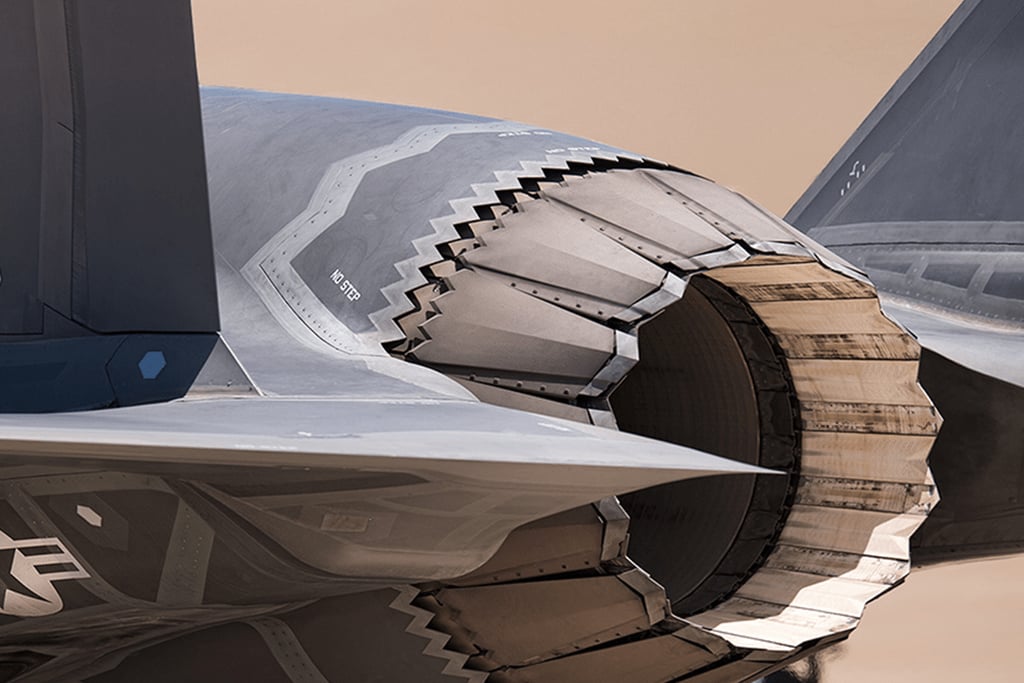


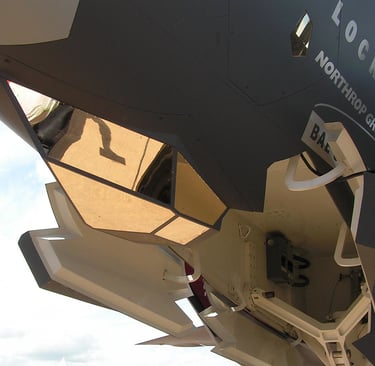
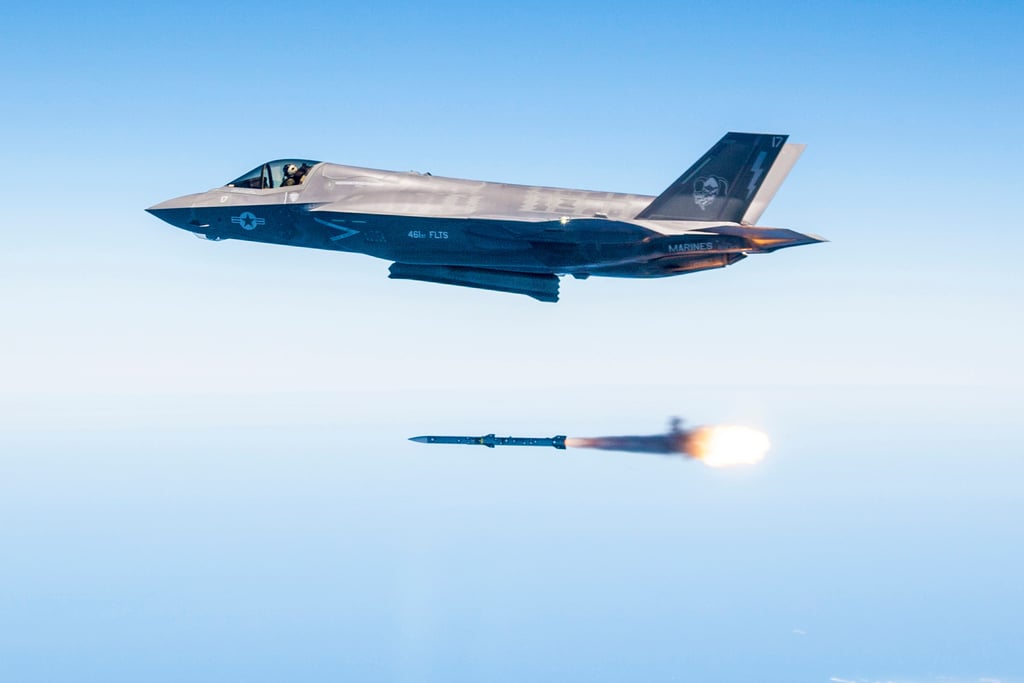

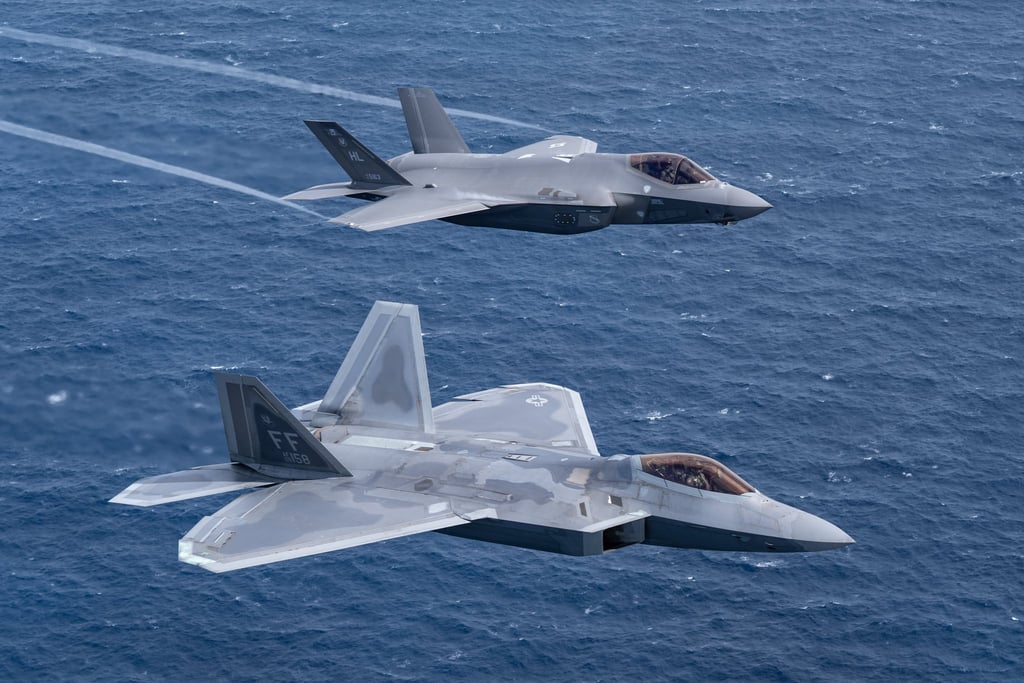


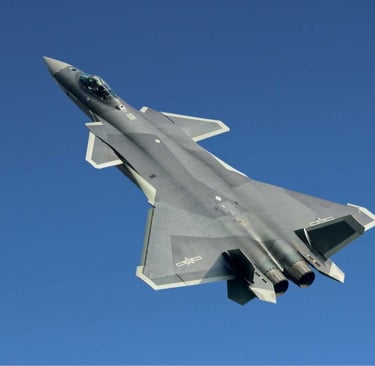
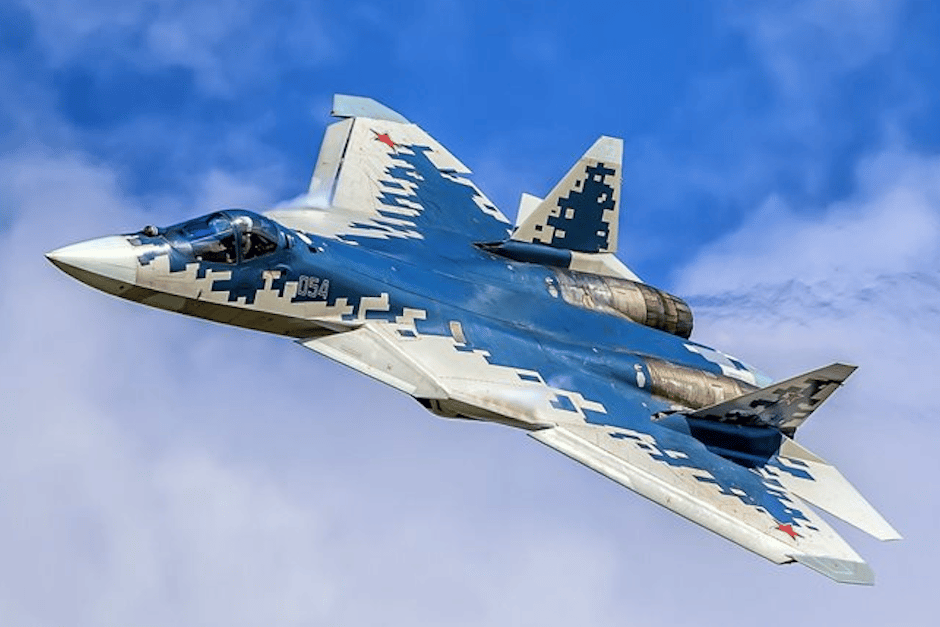

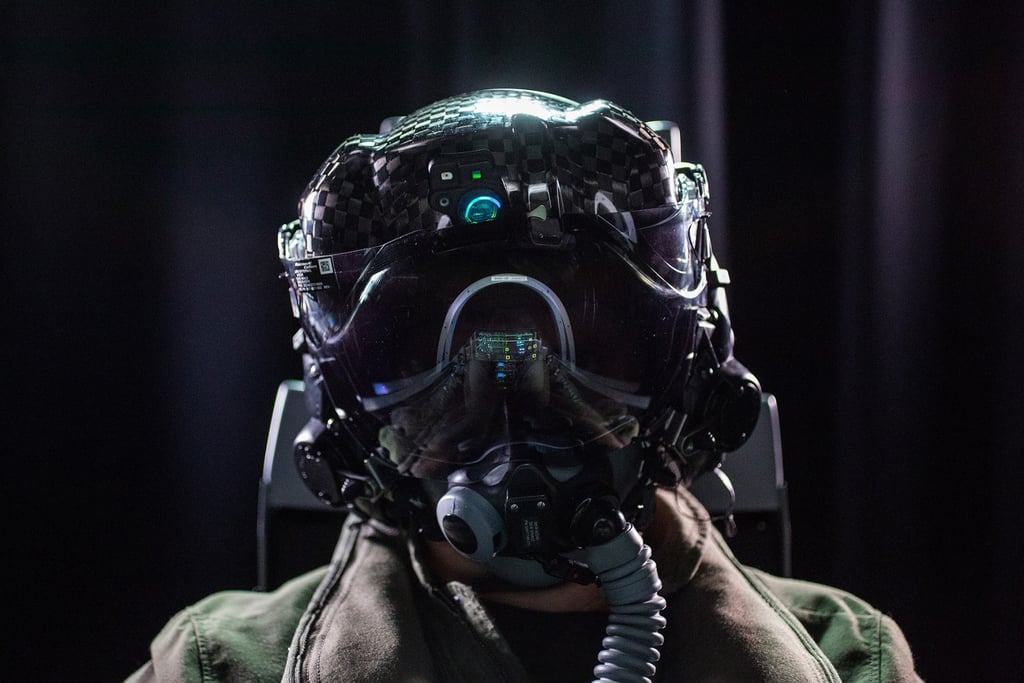

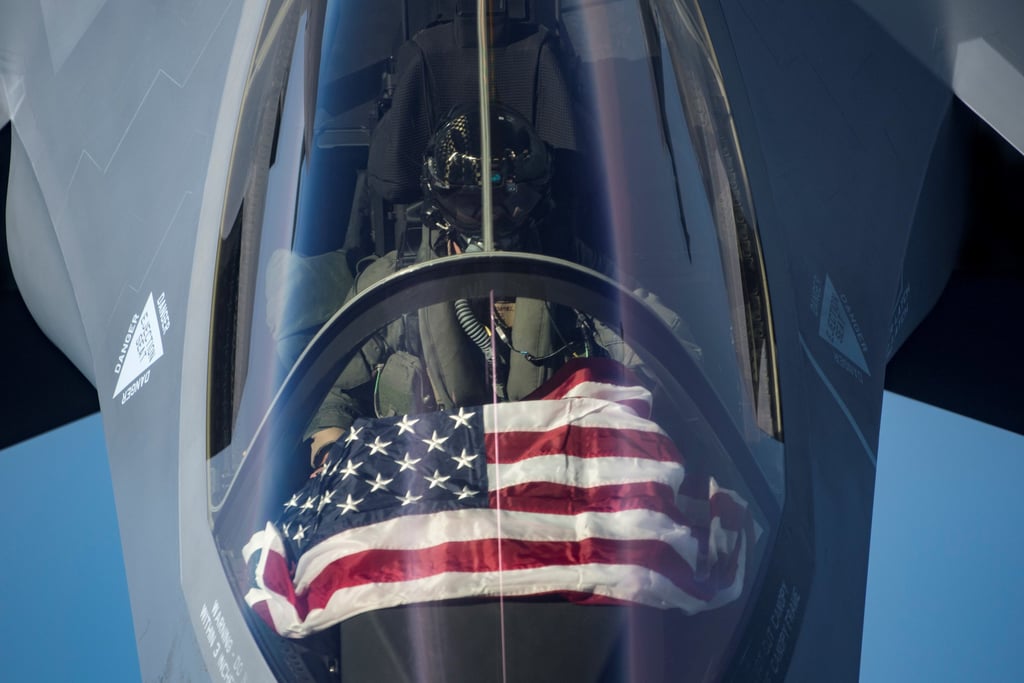

An advanced stealth brings up advanced technology, as well as powerful engines to make it more stealthy and maneuverable in the air here, ’s how the F-35 Lightning engine works, the fighter contains a P&W F135 Engine with almost 43,000 pounds of thrust like the F-15EX Eagle 2 maximizing the range of the fighter jet as the weight of the F-35 Lightning is way less than the other jets with such a thrust it increases more acceleration and adds on more thrust making it able to spin in the air and do some crazy manoeuvres in the air
WEAPONS
Coming to the most favourite part of fighter jets is its weapons there are three variants of the F-35 Lightning A, B and C, the A variant contains a 25 mm Gatling gun ( 181 rounds ) located near the wings of the jet coming below the magical part of the jet can carry about 2,000 Pound bombs and can also carry about 50 Pounds bombs to the minimum making it a deadly jet while on a mission as its diversity of weapons based on the missions it can use the bombs and the gun as mentioned the ETOS directly feeds the coordinates of the target to the bombs and the battlefield turns into ashes.
HELMET OF THE FUTURE
This part of the F-35 is a bit interesting as there is a specially designed helmet for the F-35 which makes this jet more powerful in a different way, the F-35 helmet is not just a regular head-up helmet like other jets but eventually it displays all the flight data of the jet directly on the visor of the helmet which includes the airspeed, altitude and radars of the jet as it also has a built-in night vision goggles for the fighter pilot which makes this helmet the all in one solution for the fighter pilot and a more compact option while flying and also projecting the real-time images directly on the visor which are directly transferred from the cameras all around the jet. This is different than other Helmet Mounted Display & Sights (HMDS) systems as pilot has to completely rely on the projected data from the helmet. This is due to the fact that there is no Heads Up Display (HUD) integrated in the cockpit. Therefore, the engineers have tailor made this system for flawless performance.
OUTGUNNING RIVALS
VERSUS F-22
The F-22 is still the best stealth fighter jet of the US Air Force. It outguns the Lightning II thrust payload and highly manoeuvrable styles and carrying out many different missions but the F-35 stands apart as it varies in size from the F-22 as the Raptor is little bigger compared to the F-35 is a bit small the F-22 which makes it more compact to carry more payload and an increase in thrust and carrying 8 different bombs from 2,000 pounds maximum to the minimum 50 pounds as the F-22 is more air to air dominated and the F-35 stands a little more toward air to ground dominated.
Conversely, the F-35 Lightning's compact design and advanced sensor suite allow it to excel in a wide range of operational roles, including air-to-ground strikes, reconnaissance, and close air support. With its integrated sensor fusion technology and network-centric warfare capabilities, the F-35 Lightning offers unparalleled situational awareness and information dominance on the battlefield, enabling seamless coordination with allied assets and enhancing overall mission effectiveness. While the F-22 Raptor remains unmatched in air-to-air dominance, the F-35 Lightning's versatility and adaptability make it an indispensable asset in modern warfare scenarios, where integrated multi-role capabilities are increasingly essential for mission success.
Versus J-20 "Fagin"
The comparison between the F-35 Lightning and the Chengdu J-20, two prominent 5th generation stealth fighter jets, highlights key differences in stealth integration and operational versatility. The F-35 Lightning, renowned for its advanced stealth technology and multi-role capabilities, presents a formidable adversary to the Chengdu J-20, China's indigenous stealth fighter.
The F-35 Lightning's supremacy in stealth integration is evident through its sleek design and innovative radar-evading features. With advanced sensor fusion technology and operational versatility, the F-35 Lightning offers a comprehensive solution for modern warfare scenarios, seamlessly transitioning between air-to-air combat, air-to-ground strikes, and reconnaissance missions. In contrast, while the Chengdu J-20 boasts impressive aerodynamic characteristics and advanced avionics, its larger size and less refined stealth design may compromise its ability to evade detection effectively, potentially limiting its operational effectiveness in contested airspace environments.
Ultimately, while both aircraft represent significant advancements in stealth fighter technology, the F-35 Lightning's superior stealth integration, operational versatility, and advanced sensor capabilities position it as a dominant force in modern aerial warfare.
Versus Su-57 "Felon"
The comparison between the F-35 Lightning and the Sukhoi Su-57, two prominent 5th generation stealth fighter jets, underscores nuanced differences in design philosophy, operational capabilities, and technological advancements. At the heart of the comparison lies the F-35 Lightning's unparalleled emphasis on stealth integration and multi-role versatility.
Engineered to operate in contested airspace environments, the F-35 Lightning features a sophisticated blend of radar-absorbent materials, optimized aerodynamics, and advanced sensor fusion technology, enabling it to penetrate enemy defenses undetected and execute a wide range of mission profiles with precision and lethality. In contrast, while the Su-57 emphasizes high maneuverability, supersonic speed, and advanced sensor capabilities, its stealth capabilities may not match the level of sophistication achieved by the F-35 Lightning, potentially exposing it to greater vulnerability in contested airspace environments.
Ultimately, the F-35 Lightning's emphasis on stealth integration, multi-role versatility, and network-centric warfare capabilities solidifies its position as a dominant force in modern aerial warfare.
CONCLUSION
The F-35 Lightning ticks all of its checkpoints of being the deadliest and the most dangerous stealthy fighter jet on the battlefield with all of its 5th generation technology and highly powered engines and carrying extra payload and a variety of weapons within a jet due to its smaller size than the F-22 Raptor and the special ability of the jet is its IR cameras all around the jets which enables the vision of the pilot to look beneath the jet also with its real-time imaging directly feed on the helmet's visor.
In comparison to its counterparts, such as the F-22 Raptor, Chengdu J-20, and Sukhoi Su-57, the F-35 Lightning II showcases unparalleled versatility and adaptability across a spectrum of operational roles. While the F-22 Raptor boasts unmatched air-to-air dominance, the F-35 Lightning II's compact design and integrated sensor suite excel in air-to-ground strikes, reconnaissance, and close air support missions. Moreover, its superior stealth integration, advanced sensor fusion technology, and network-centric warfare capabilities position it as a formidable adversary in contested airspace environments.
As the global landscape of aerial warfare continues to evolve, the F-35 Lightning II remains at the forefront of innovation, embodying the pinnacle of 5th generation stealth fighter technology. With its ability to seamlessly integrate advanced capabilities and adapt to dynamic mission requirements, the F-35 Lightning II heralds a new era of air dominance, where versatility, agility, and information superiority converge to redefine the future of aerial warfare
